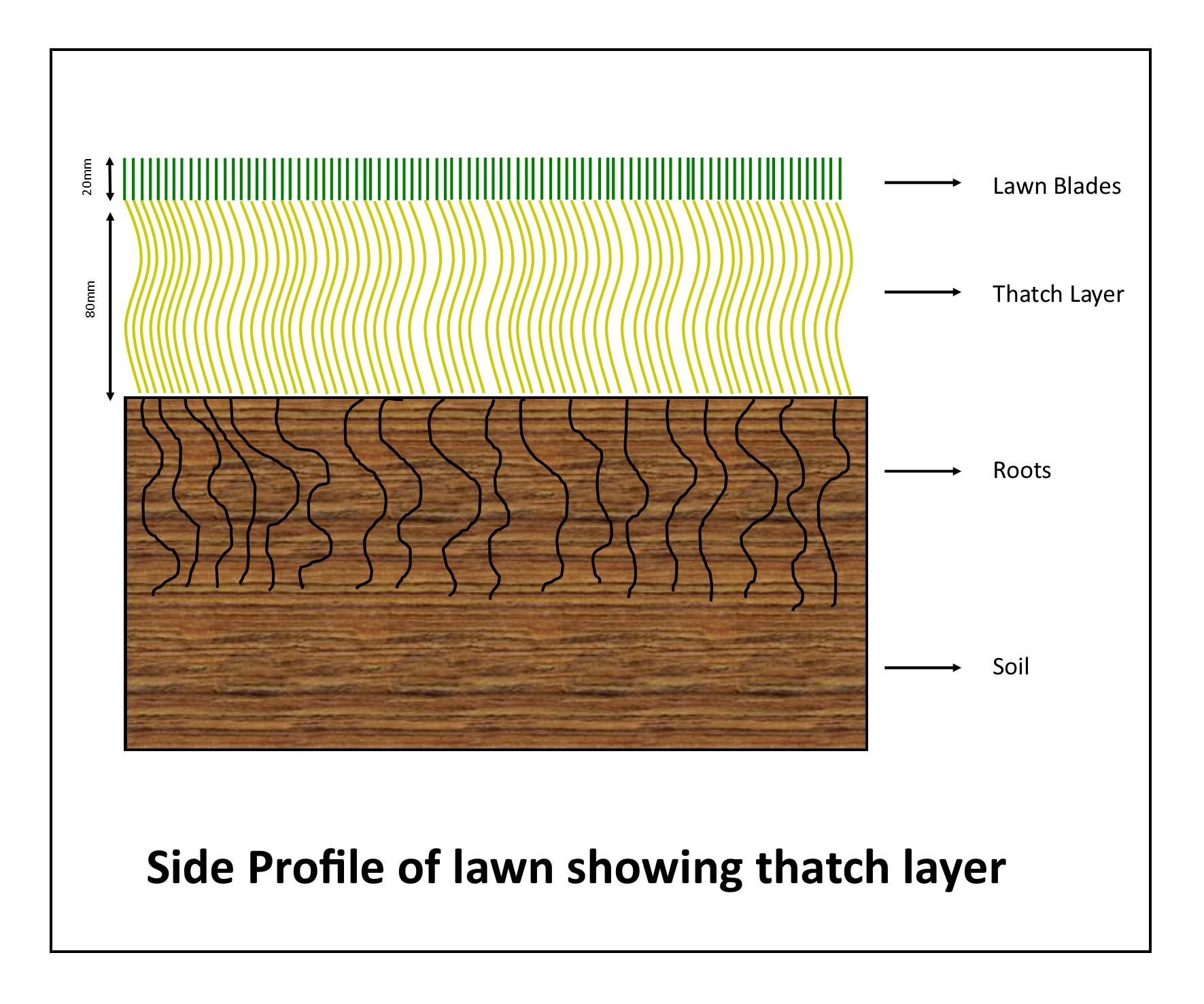Scarifying your lawn
Author: Stefan Palm Date Posted: 17 October 2024
Scarifying helps rejuvenate thick, spongy lawns by removing thatch and excess root build-up. Learn when and how to scarify your lawn in South Australia for lush, green results.
Summary
If your lawn feels thick, spongy, or discolours every time you mow it, it’s probably time to scarify. Scarifying removes the build-up of thatch and dense root matter that prevents air, water, and nutrients from reaching the soil. The result is a healthier, tighter, greener lawn. In South Australia, scarifying is suitable only for Couch and Kikuyu lawns and is best done from October through February. This guide explains how to do it step-by-step, what to expect during recovery, and what to do if you have Buffalo instead.
Scarifying – How to Bring Your Lawn Back to Life
Scarifying is the process of removing the build-up of thatch and excessive root zone in your lawn. It helps return a thick, spongy lawn back into a green, tight-knit surface and is something you'll need to do at least every two years.
Keep in mind that the only lawns suitable for scarifying in South Australia are Couch and Kikuyu.
What Is Thatch and Why Does It Matter?
Over time, lawns such as Couch and Kikuyu can develop a thick, spongy layer of thatch — a straw-coloured mat of exposed roots and stems that builds up between the soil and the leaf blades.
You’ll notice the signs when your lawn becomes uneven, soft underfoot, or turns brown after mowing. The thicker the thatch layer, the harder it is to keep your lawn green because the mower tends to scalp the tops of the blades, exposing the brown layer beneath.
For example:
- A 100mm-tall lawn might have 80mm of thatch and only 20mm of green blades.
- A 150mm-tall lawn might have 130mm of thatch and still only 20mm of green blades.
When you mow off those blades, you expose the brown thatch. The instinctive fix is to raise your mower height, but that only allows more thatch to grow. The right solution is to remove the thatch and adjust your mowing habits instead. Mow more often rather than higher.
How to Scarify Your Lawn
Scarifying can be done between October and February for Couch and Kikuyu lawns. It’s a multi-stage process that removes thatch, thins out the root zone, and restores your lawn’s health and colour.
Step 1: Remove the Thatch
Start by mowing your lawn down to soil level using a standard mower.
Lower the cutting height notch by notch until you can see the soil across the surface. You can’t damage Couch or Kikuyu with a mower, so don’t be afraid to go low.
Expect to remove a huge amount of material – it’s a good idea to plan where the clippings will go. After this process, your lawn will look brown and bare – that’s perfectly normal.
In many cases, this step alone can rejuvenate your lawn by removing the thick spongy layer and allowing new shoots to emerge.
Step 2: Scarify the Root Zone
For a deeper restoration, use a scarifying machine (also called a vertimower). These are available for hire at most equipment hire shops.
Scarifiers have vertical blades that slice into the root zone, removing dead and woody organic matter. This process opens up the soil, allowing oxygen and nutrients to penetrate and stimulating new stolons and rhizomes to grow.
You’ll be amazed how much debris is lifted out — but this is exactly what your lawn needs to breathe and grow again.
Step 3: Apply a Wetting Agent and Fertiliser
After scarifying or scalping, apply a liquid wetting agent and a complete fertiliser such as Paul Munns Greenkeeper.
A wetting agent ensures even water penetration through the soil, helping nutrients reach the root zone. The fertiliser replenishes essential nutrients and encourages quick recovery.
What to Expect After Scarifying
Immediately after scarifying, your lawn will look terrible — brown, flat, and lifeless. Don’t panic!
Couch and Kikuyu recover quickly in warm weather. With good sunlight and regular watering, expect a full recovery in 4–6 weeks.
Because this spring has been mild, you may have noticed slower-than-usual growth, but as temperatures climb, your lawn will bounce back faster.
What If You Have Buffalo?
Buffalo lawns should not be scarified or scalped like Couch or Kikuyu because Buffalo doesn’t have underground runners (rhizomes). If you scalp Buffalo too hard, you risk pulling it out by the roots.
To reduce thatch in Buffalo:
- Only mow one notch lower than usual.
- Don’t remove all the colour – leave some green.
- Wait 2–3 weeks for recovery before mowing slightly lower again.
This gradual process can take several months but keeps your Buffalo lawn safe and healthy. Never go below 40mm, and only attempt dethatching from October to March.
Need Help?
If you’d like advice or professional assistance with scarifying your lawn, call Paul Munns Instant Lawn on (08) 8298 0555 or email info@paulmunnsinstantlawn.com.au.
Frequently Asked Questions
Q: How often should I scarify my lawn?
A: Every two years is ideal for most Couch and Kikuyu lawns, but if your lawn becomes thick and spongy sooner, it may need it annually.
Q: Can I scarify in winter?
A: No. The grass is dormant during winter, so recovery is too slow. Only scarify when your lawn is actively growing — between October and February.
Q: What’s the difference between scarifying and dethatching?
A: Dethatching removes the surface thatch layer. Scarifying goes deeper, thinning out the root zone and removing dense organic matter.
Q: How do I know if my lawn needs scarifying?
A: If your mower scalps the grass even at higher settings, or your lawn feels spongy and loses colour easily, it’s time to scarify.
Q: Will scarifying damage my lawn?
A: It may look rough immediately after, but with proper aftercare, your lawn will recover thicker and greener than before.


